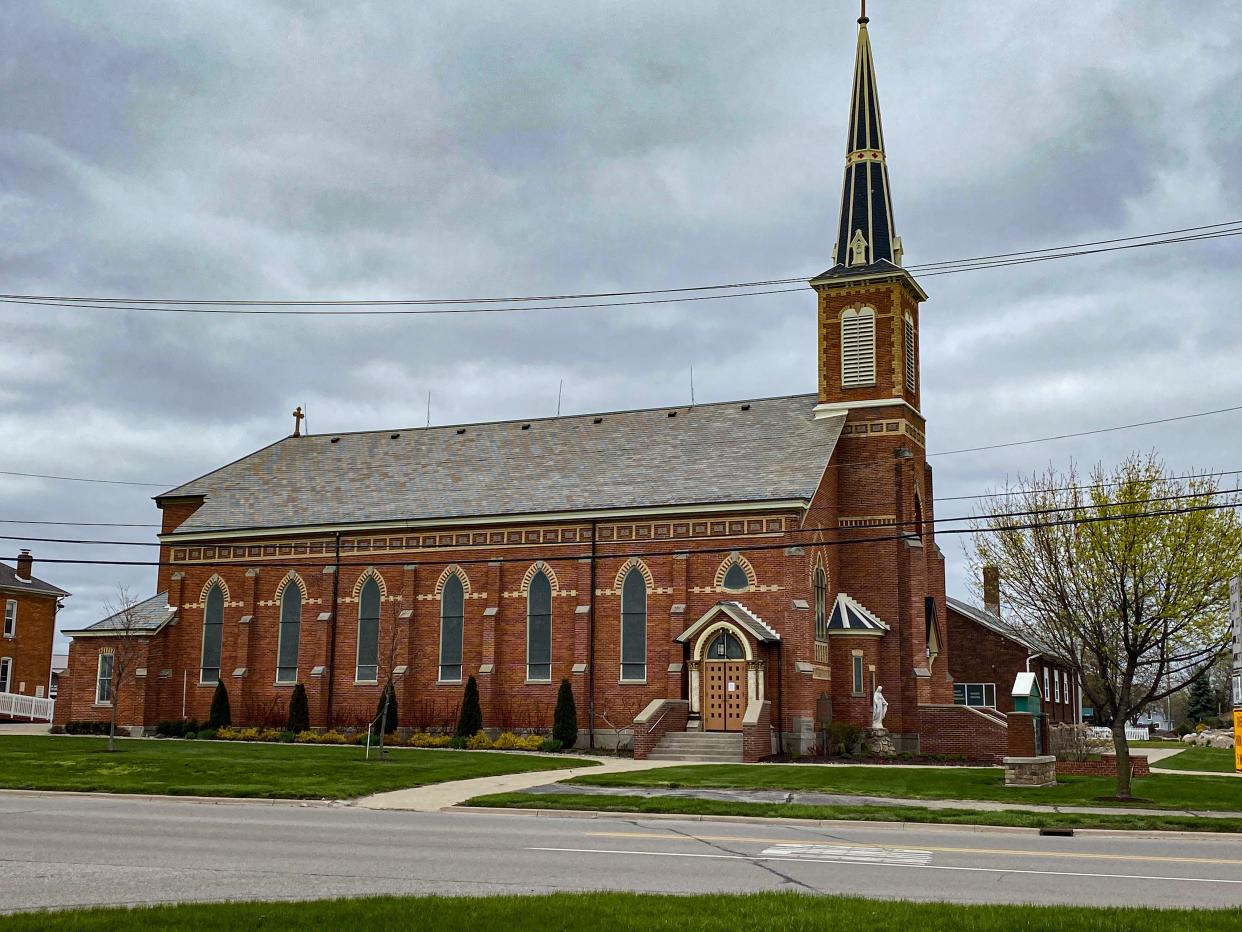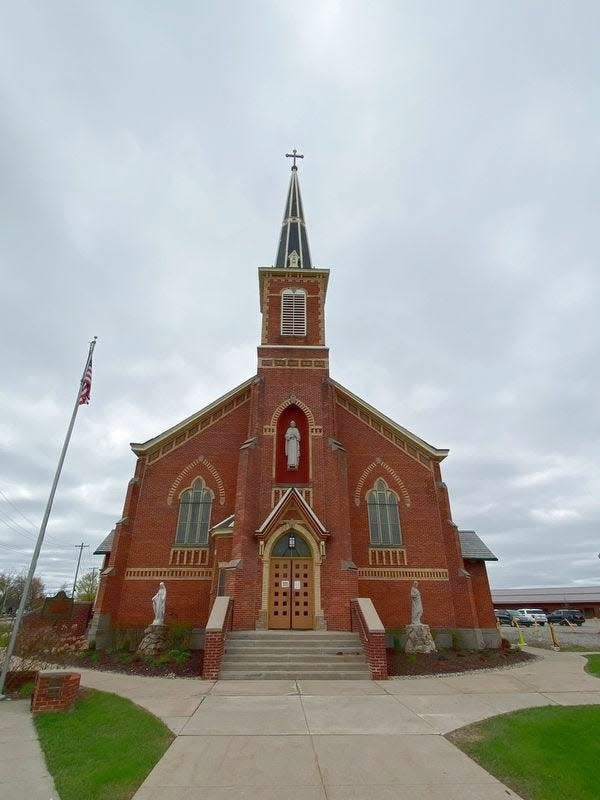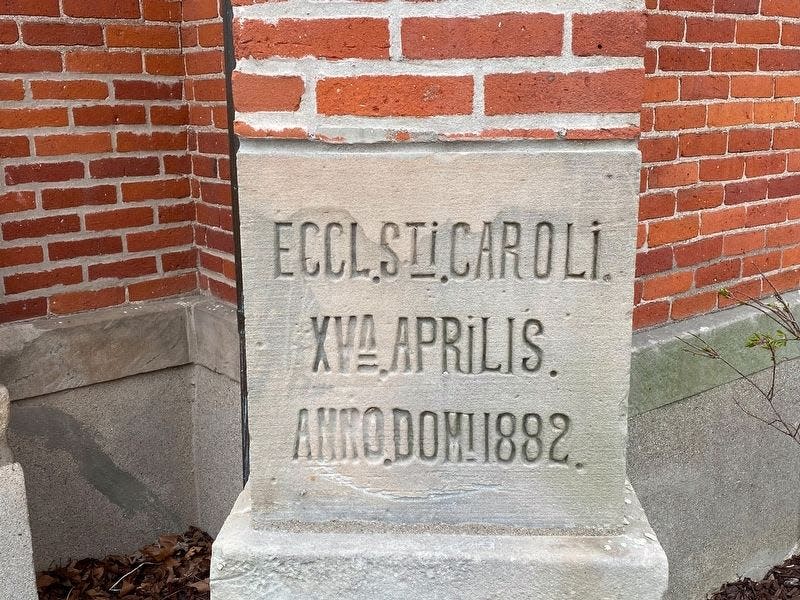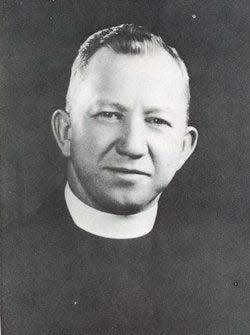Monroe County History: St. Charles Borromeo Catholic Church a key institution

- Oops!Something went wrong.Please try again later.
When one examines the earliest history of Monroe County, one cannot discount the impact of the institution known as St. Charles Borromeo Catholic Church at 8125 Swan Creek Road in Newport. Strictly from a sheer timeline perspective, the history and activities of St. Charles represent some of the earliest efforts to establish both religious and residential foundations in our part of Michigan.
As French-Canadian families began to settle in the Swan Creek portion of what would eventually become Monroe County, the obvious need to establish a place of worship was at the forefront of the minds of many. While settlement began to accelerate around 1816, it would take until the 1830s to have missionary priests began to celebrate Mass in the area.
Peter Allore would be the first to provide an unofficial structure to serve as a church – building a log house in 1838. Priests from the Redemptorist Fathers order serving at St. Anne’s Catholic Church in Detroit (the area’s first church founded in 1701 by traders and priests led by Antoine de la Mothe Cadillac) began to say Mass occasionally at the log house (and at the home of Peter Brancheau) until 1846 when a more permanent location would be constructed.

The second location (and the first official one) for St. Charles would be built on land donated by Jeremias Beaubien and is just south of the church’s current location. Rev. Charles De Prietre was the impetus behind this location. It would serve the growing church population for a short time until another location would produce both a new building and a permanent priest, as promised by Coadjutor Bishop Peter Paul Lefevere who became a key administrator of the recently formed Diocese of Detroit (founded in 1833). According to the St. Charles Borromeo Church’s history webpage timeline, in 1853, John B. Trombley donated 4 acres of land a short distance off Dixie Highway on Trombley Road. The resulting church was 30 by 25 feet in dimensions and 16 feet tall. The steeple was 20 feet high. That same year, the Rev. John Van Gennip would become the first resident pastor, and Louis Laduke would donate land for a cemetery.

Rev. H. Kemper would arrive in 1880 and promote the need for a new church. That goal would be realized in 1882 when the cornerstone for the present St. Charles was laid. The structure sits on land donated by Jacob and Frank Masserant, whose descendant Gerry Masserant I profiled previously on these pages and founded Masserant’s Feed and Grain in 1982. The church building was completed in 1886, and a new rectory was completed a year later.

As I also wrote previously, it was the Rev. Lambert M. LaVoy, who served at St. Charles (and later led St. Joseph’s in Erie) and was known as a Monroe County historian and author, who talked about how the famous muskrat and its French traditions helped to build the first parish school, completed in 1914. LaVoy said the Rev. Tobias Morin started promoting the school project in 1912 and started the Muskrat Dinner in 1913 during Lent to raise funds for the building. Tobias helped justify eating muskrat during Lent, saying the muskrat is, “…primarily being vegetarian and, occasionally, preferring walleye perch as a treat.” Also, the dinner would honor longstanding French traditions.
Mike Flint resurrected the Muskrat Dinner tradition at St. Charles in 1966 by organizing the crew and cooking the harvest of the hunt. He was joined by Jimmy Brancheau, Alvie Reaume and others to, once again, help raise funds for St. Charles Borromeo school athletic programs.
Tom Adamich is president of Visiting Librarian Service, a firm he has operated since 1993. He also is project archivist for the Greening Nursery Co. and Family Archives and the electric vehicle awareness coordinator at Monroe County Community College.
This article originally appeared on The Monroe News: Monroe County History: St. Charles Borromeo Catholic Church

